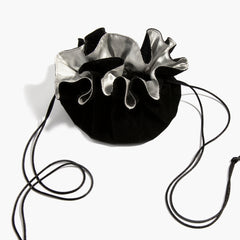_____
Beads Were Used for Both Currency and Prayer Precious materials such as red coral were fashioned into beads and traded as currency as early as 4000 B.C.E. The Egyptians – both men and women –flaunted social position with elaborate Nefertiti-style beaded necklaces in horizontal rows of turquoise, lapis lazuli, and glass. Ancient Roman women wore pearls – a fashion “classic” that was revived in the Renaissance and continues today. In Hinduism, Islam, and Christianity, beaded necklaces such as mala and rosaries offered spiritual grounding during prayers, chants, and devotions.
Metalworking Upped the Ante With the arrival of the Bronze age around 3000 B.C.E., copper, gold, and silver were melted and cast into shapes for chains and charms. Strands of precious metals decorated with valuable amber, coral, and coins were a way of transporting savings that could be converted to money when needed.
Necklaces Became Symbolic The use of metals also gave rise to amulets, magical totems thought to bring long life, prosperity and protection against evil spirits. Using troves of gold from the Nubian desert, the Egyptians created jewelry with highly-evolved religious symbolism and spiritualism that carried them from life to death. The ALEX AND ANI spring 2018 collection, inspired by Ancient Egypt, brings this rich mystical tradition to life with a line of pendants based on ancient talismans. Here are three of the most iconic designs:
The Ankh: In Egypt, the sign of a cross with a handle on top was the hieroglyphic character that read “eternal life.” Gods were often portrayed carrying it by its loop, or holding one in each hand with arms folded across the chest. Wearing the charm was believed to grant health, physical endurance, and long life. For a modern take on this powerful life force, consider an Ankh statement necklace.
The Blue Lotus: The image of this sacred flower appeared on papyrus scrolls and building pillars, as well as thrones and headdresses of the Divine Kings. The lotus symbolizes rebirth and regeneration: The plant is rooted in muddy swamps, but its beautiful flower springs forth into an explosion of beautiful blossoms. This inspiring symbol of revitalization is captured in our Blue Lotus Pendant Necklace.
The Eye of Horus: The all-seeing eye of the god Horus was the most famous and popular amulet in ancient Egypt, believed to protect wearers from bad energy, curses, and negative supernatural powers. Reimagined as our Eye of Horus Crystal Pendant Necklace, the unblinking amulet remains an emblem of security and insight.
Written by Joanna Powell



